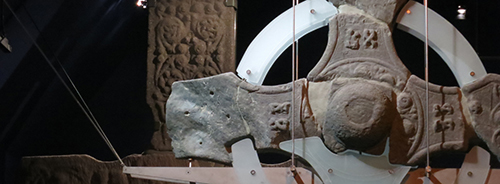I opened the door, and the world of Scottish music, food, history, art, culture, and people flooded back into my life., I was listening to some James Taylor and heard some fragments that sounded like the Scottish traditional fiddle music I had just been listening to. I began analyzing Scottish trad from the 17th and 18th centuries, tracing melodic and rhythmic fragments and phrases to modern day American pop, bluegrass, country and western, and folk music. Eureka! I attended Scottish Highland Games, tried my hand at the Scottish heavy events, including tossing stones for height and distance, and tossing a caber.
I connected with bluegrass, old-time, and Appalachian music to explore their Scottish roots. All led me back to Scotland. Not coincidentally, all the family names and place names around our homestead in Carolina were Scottish. When I first got to Scotland, I felt I was back in Carolina. I made many friends, traveled the Highlands and Islands, and took a deep drink in the river of Scottish culture.
I started doing research at a university in Glasgow. Years earlier, I helped lead a “Berklee on the Road” trip to Glasgow and met the head of music at the university, Mark Sheridan. Mark is a wonderful composer and has deep knowledge of Scottish music. We became fast friends, and then he became my supervisor for the research. Eventually, we both agreed that, though we found tracing Scottish bits from Scot trad to modern American music fascinating, the topic was better demonstrated to the untrained through musical performance. When words fail, music takes up the story. I had noticed that there were so many wonderfully talented Scottish trad music students in Scotland. I knew that Berklee had the same talent with many who also had bluegrass and other American folk genres under their belts. Mark and I agreed what a fantastic musical experience it would be to build a seaway between Glasgow and America, much like my ancestors had traveled, where these musicians could learn from each other and have that Eureka moment hearing the roots and influences.
Mark and I decided the best way to demonstrate the results of the research was to collaborate. We agreed to bring nine Scottish trad student musicians to Boston to join with nine American “folk” musicians to produce a concert that would demonstrate that many American music genres had roots in Scotland or were influenced by Scottish music. This does not diminish the influences and roots of other ethnic music, it simply reveals those from Scotland.
Our first concert was at the New Hampshire Highland Games in Loon, Mountain, New Hampshire. The result was amazing. The audiences loved the music and the story. And most importantly, they heard the connections. (This experience deserves an article of its own.) The band was then asked to perform this concert at the Celtic Connections Festival in Glasgow, Scotland, the Festival Interceltique in Lorient, Brittany, France, as well as smaller ensemble concerts in New York City, Boston, and for the Smithsonian in Washington, D.C. The group also is receiving help from the National Trust for Scotland U.S.A., from whom the project won the annual award for making the greatest contribution to advancing Scottish culture in 2012.
Through these adventures, I met Iain Anderson, a BBC Scotland commentator who, with Mark Sheridan, was there at the beginning of the Celtic Connections Festival in the earl 1990s. Iain hosted a very popular music show for years on BBC dealing with the music of singer-songwriters. The festival is one of the largest of its kind in the world. Iain has an engaging article in this issue on the beginnings of the festival.
Through Mark and Iain I met member of Scottish Parliament Michael Russell. He is also a television producer and director and the author of seven books. Russell was appointed minister for environment and then became minister for culture, external affairs and the constitution, and was later promoted to cabinet secretary for education and lifelong learning. Michael is a strong supporter of Scottish culture and collaboration with America. He was honorary chieftain for the NH Highland Games in 2010. I was pleasantly surprised to learn that Michael is also a prolific and talented photographer. His photos are beautiful snapshots of everyday life and landscapes in Scotland. We hope you agree as you enjoy his photographs in this issue.
In 2011, while at the NH Highland Games, I was introduced to a wonderful writer, Paula de Fougerolles, who gave me her book, The Chronicles of Iona: Exile. This issue has an excerpt from her book, which also has a sequel, “The Prophet.” Paula says of her book,
It is 563 A.D. The world has been plunged into chaos by the collapse of the Roman Empire and barbarian invasions: civilization holds on by a thread. Columba, a powerful abbot-prince from Ireland, is exiled for a violent act to the pagan colony of Dal Riata on the west coast of Scotland. Awaiting him there is Aedan, the down-and-out second son of the colony’s previous king, slain by the bloodthirsty Picts.
Together, this unlikely pair travels the breadth of a lawless, divided realm, each in search of his own kind of unity. Their path is fraught with blood feuds, lost love, sacrifice, miracles, dark gods, and monsters. Beset on all sides, their only hope is to become allies—and to forge a daring alliance with the pagan Picts. For both, what begins as a personal imperative becomes a series of events that lead to the foundation of the monastery of Iona and the kingdom of Scotland—events that literally change the world.






